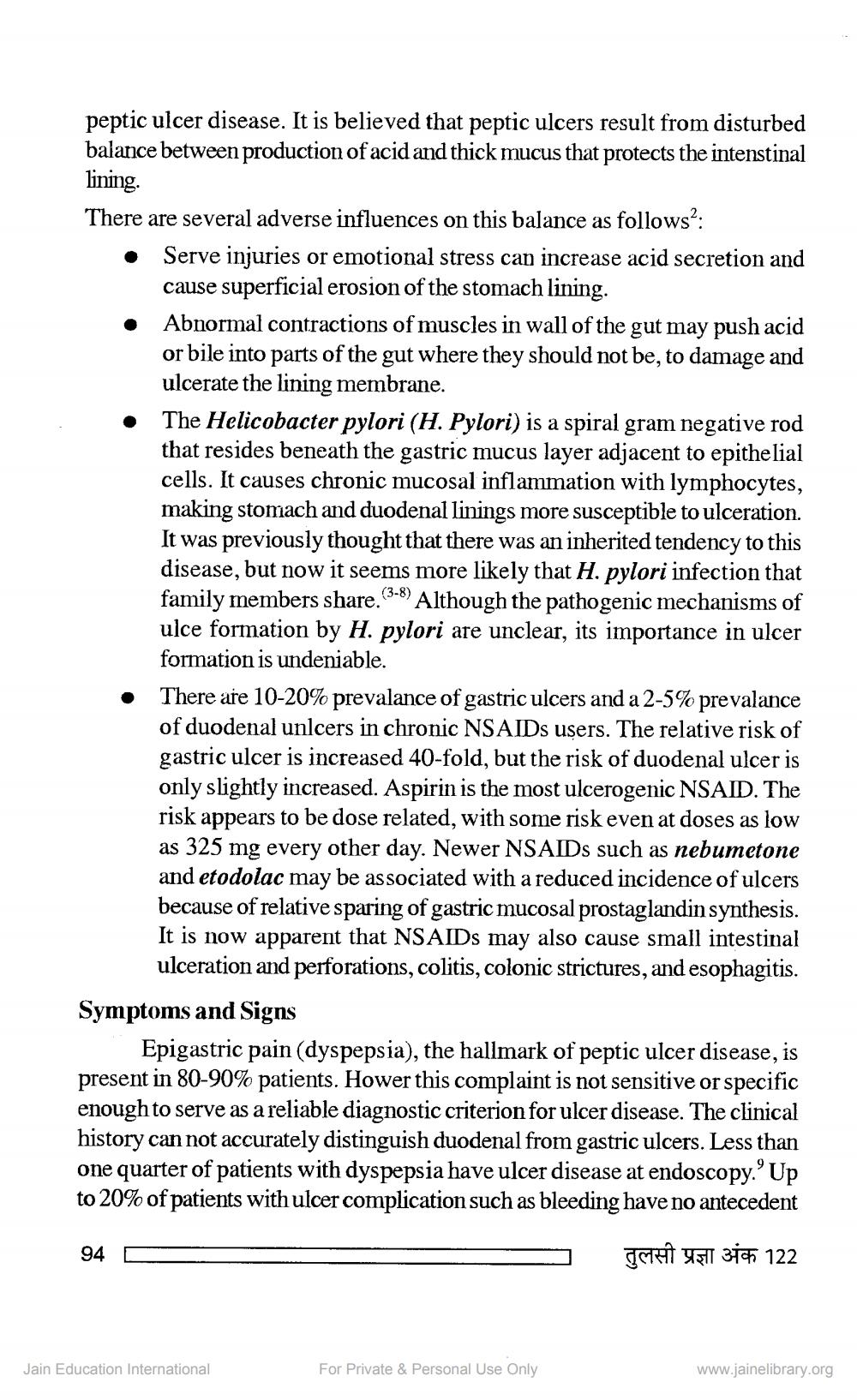________________
peptic ulcer disease. It is believed that peptic ulcers result from disturbed balance between production of acid and thick mucus that protects the intenstinal lining.
There are several adverse influences on this balance as follows2:
Serve injuries or emotional stress can increase acid secretion and cause superficial erosion of the stomach lining.
94
Abnormal contractions of muscles in wall of the gut may push acid or bile into parts of the gut where they should not be, to damage and ulcerate the lining membrane.
The Helicobacter pylori (H. Pylori) is a spiral gram negative rod that resides beneath the gastric mucus layer adjacent to epithelial cells. It causes chronic mucosal inflammation with lymphocytes, making stomach and duodenal linings more susceptible to ulceration. It was previously thought that there was an inherited tendency to this disease, but now it seems more likely that H. pylori infection that family members share. (3-8) Although the pathogenic mechanisms of ulce formation by H. pylori are unclear, its importance in ulcer formation is undeniable.
There are 10-20% prevalance of gastric ulcers and a 2-5% prevalance of duodenal unlcers in chronic NSAIDS users. The relative risk of gastric ulcer is increased 40-fold, but the risk of duodenal ulcer is only slightly increased. Aspirin is the most ulcerogenic NSAID. The risk appears to be dose related, with some risk even at doses as low as 325 mg every other day. Newer NSAIDs such as nebumetone and etodolac may be associated with a reduced incidence of ulcers because of relative sparing of gastric mucosal prostaglandin synthesis. It is now apparent that NSAIDs may also cause small intestinal ulceration and perforations, colitis, colonic strictures, and esophagitis.
Symptoms and Signs
Epigastric pain (dyspepsia), the hallmark of peptic ulcer disease, is present in 80-90% patients. Hower this complaint is not sensitive or specific enough to serve as a reliable diagnostic criterion for ulcer disease. The clinical history can not accurately distinguish duodenal from gastric ulcers. Less than one quarter of patients with dyspepsia have ulcer disease at endoscopy.' Up to 20% of patients with ulcer complication such as bleeding have no antecedent
तुलसी प्रज्ञा अंक 122
Jain Education International
For Private & Personal Use Only
www.jainelibrary.org




